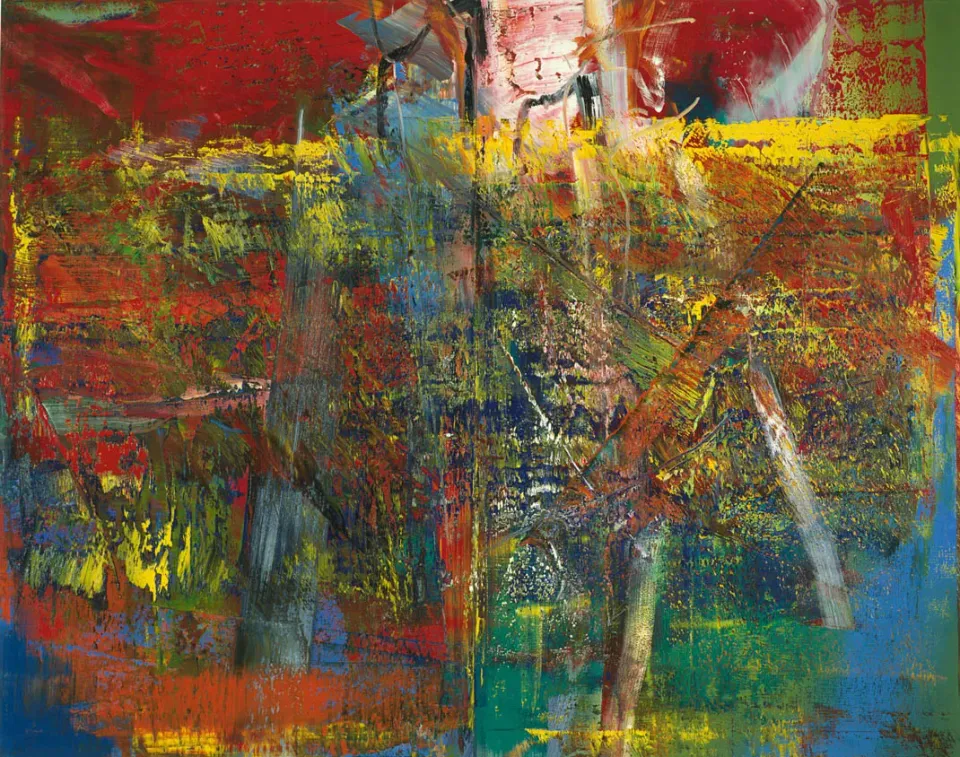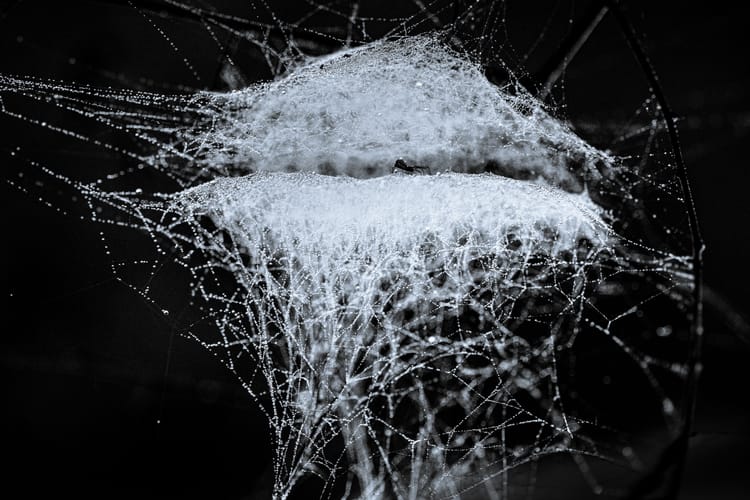7. Daniel Shank Cruz ~ what is found in poetry

Another winter turns to spring in the Northern Hemisphere. The world is flooded with suffering. Violent conflicts in Gaza, Ukraine, Sudan, and many other places. The warmest January on record—despite chilly temperatures across much of North America—as though another bell tolling for climate change. The continued rise of extreme right wing parties and politicians across the globe.
Daniel Shank Cruz cites William Carlos Williams’ Asphodel: “It is difficult / to get the news from poems / yet [people] die miserably every day / for lack / of what is found there.”
What do we find in poetry during this chaotic era?
Cruz's poems invite us to experience the preciousness of this moment.
on the subway our backpacks kiss
Their poems invite us to expand our hearts and minds, whether through a different experience than our own:
across the alfalfa field their grandmother’s biphobia
or new vocabulary words:
Imbolc
early morning constellation
of headlights
(Imbolc is a traditional Gaelic festival on February 1 and marks the beginning of spring. It’s also the Christian feast day of Saint Brigid, Ireland's patron saint.)
These poems bridge the seeming gap between human beings and nature:
outside my window
pigeons and
the new Beyoncé album
and remind us that we are one species living on a shared earth-home to all life:
empty birdfeeder the taste of seared hamburger
What is found in poetry?
I recall the words of the Russian novelist Aleksandr Solzhenitsyn upon receiving the 1970 Nobel Prize in Literature:
I believe that world literature has it in its power to help mankind, in these its troubled hours, to see itself as it really is, notwithstanding the indoctrinations of prejudiced people and parties. World literature has it in its power to convey condensed experience from one land to another so that we might cease to be split and dazzled, that the different scales of values might be made to agree, and one nation learn correctly and concisely the true history of another with such strength of recognition and painful awareness as it had itself experienced the same, and thus might it be spared from repeating the same cruel mistakes. And perhaps under such conditions we artists will be able to cultivate within ourselves a field of vision to embrace the WHOLE WORLD. . . .
Solzhenitsyn concludes his lecture with this Russian proverb:
ONE WORD OF TRUTH SHALL OUTWEIGH THE WHOLE WORLD. And it is here, on an imaginary fantasy, a breach of the principle of the conservation of mass and energy, that I base both my own activity and my appeal to the writers of the whole world.
May the poems we read and write expand hearts and minds, and may our poetry help build a world of justice, peace, and beauty.
Ryland Shengzhi Li, confluence co-editor
poems
espresso martini
the scar
on her lip
Failed Haiku 53 (May 2020)
I think
of the Sphinx
new cane
Hauling the Tide: Haiku Society of America Members’ Anthology 2024
brownout weather
the bodega
out of milk
Kingfisher 4 (October 2021)
Zoom meeting
I fall in love with her
bookcase
The Unexpected Weight: The Haiku Society of America Mentorship Program Anthology 2021
winter sky smell of leather in the dungeon
Heterodox Haiku 1 (Autumn 2022)
Memorial Day
embers
another mass shooting
Modern Haiku 53, no. 3 (Autumn 2022)
outside my window
pigeons and
the new Beyoncé album
Kingfisher 6 (October 2022)
Saturday sunbeam on his boricua neck scent of sex
on a woman’s lap
on the subway
a lamp
Kingfisher 6 (October 2022)
winter solstice
his sun tattoo
half under the sheet
Kingfisher 7 (April 2023)
on the subway our backpacks kiss
Kingfisher 8 (October 2023)
sunrise
on the escalator
a delivery bike
Kingfisher 8 (October 2023)
May Day another book ban
Modern Haiku 54, no. 3 (Autumn 2023)
summer shower the move to hospice
Modern Haiku 55, no. 1 (Winter-Spring 2024)
twilight
the glow
of her text
Modern Haiku 55, no. 2 (Summer 2024)
Imbolc
early morning constellation
of headlights
Blithe Spirit 34, no. 2 (May 2024)
in season watermelon emojis
Acorn 52 (Spring 2024)
taste of summer in my mouth new variant
petrichor rainout
last trip to the vet the rain continues
empty birdfeeder the taste of seared hamburger
leaving
all the lights on
my prescription unfilled
when did the magnolia blossoms disappear campus protests
#FemkuMag 36 (2024)
picket line too angry to write haiku
#FemkuMag 36 (2024)
amblyopia the rain-soaked magnolia bark blends with the asphalt
photosynthesis blossoming tattoos
across the alfalfa field their grandmother’s biphobia
essay
re-visioning the tradition
I love how haiku builds a global community and enjoy writing within its tradition. In his poem “Asphodel, That Greeny Flower,” William Carlos Williams asserts that
It is difficult
to get the news from poems
yet [people] die miserably every day
for lack
of what is found there.
I firmly agree that poetry enhances the lives of its readers and writers. I write haiku and senryu to help me understand my own life, and I publish it with the hope that it helps some readers, too.
When I write, I write senryu, and if a kigo shows up, the poem becomes a haiku. I do not find subject matter-based definitions differentiating the two genres helpful. Humans--and thus human nature--are a part of nature as a whole, so binarizing them by saying senryu focuses on the former and haiku focuses on the latter makes no sense.
Because I’m interested in pushing the boundaries of haiku my idea of what makes a good poem is pretty simple: one that moves me as a reader, whether because of a successful kireji, a striking use of language, a beautifully evoked image, or an unusual form. Any topic is eligible.
Another way to illuminate my philosophy of haiku is to list a few of my influences. Bashō is my favorite classical haiku writer, and my favorite haiku is
even in Kyoto
hearing the cuckoo’s cry
I long for Kyoto
Sanki Saitō and Marlene Mountain are two other writers I like because of their socially activist work. Rowan Beckett Minor is my favorite current writer. I think Cor van den Heuvel’s
tundra
is a good poem. I am unmoved by Bashō’s
old pond
a frog jumps in
water’s sound
because the last line seems superfluous. Doesn’t revising it to a monoku
old pond a frog jumps in
already imply the sound of the water for the reader while also giving the reader more agency to picture the image for themselves? I am definitely not arguing that I think I’m a better writer than Bashō (ha!), but that it is important for every new generation of writers to take what they find helpful from tradition to use for themselves rather than unquestioningly accepting the entirety of an accepted tradition just because previous generations have. My poetry attempts to re-vision the tradition as a sign of respect for it.
*Note from the editors: For those who want to further explore the meaning of Japanese terms like haiku, senryu, kigo, and kireji, see Haiku Commentary's glossary of haiku terms.
commentaries from Fellows
David Green, Nicky Gutierrez & Rowan Beckett Minor
David Green
A good poem, according to poet Daniel Shank Cruz, is “one that moves" them. And what moves them are haiku with a “successful kireji, a striking use of language, a beautifully evoked image, or an unusual form.” By this measure, their own poems are quite moving and contain much of interest and much to admire. A few quick examples follow.
Language
Words I looked up while reading these poems: amblyopia, boricua, Imbolc.
Structure
I think
of the Sphinx
new cane
A seven word/seven syllable poem. How fun to write a poem with only one-syllable words and one which works for other reasons as well. An interesting exercise for the rest of us to try.
Language and Structure:
Memorial Day
embers
another mass shooting
In each line, Cruz references death and dying in a different way: “Memorial Day…embers…mass shooting,” emphasizing the repeated and relentless nature of mass shootings through the poem’s language and structure. Poems about “hard” topics like this need a deft hand to make them effective, which Cruz manages through their word choice and construction, making this impactful social commentary. Flipping the traditional short/long/short line length with “embers” centered alone also helps the poem.
Another notable feature of Cruz’s haiku is their use of the cityscape - the stuff of cities - which adds to the enjoyment and satisfaction one gets from reading their work. Haiku moments spring from subway seats and bodegas, pigeons and dungeons.
brownout weather
the bodega
out of milk
“brownout weather” is so much more evocative than “brownout.” For us city dwellers (Cruz: Jersey City, formerly the Bronx; Me: Chicago), it conjures the drip and buzz of countless window unit A/Cs, the whir of fans and all the sounds set free by open windows. Like the storm you feel coming, “brown out weather” hints at what is likely to come, sends you to the bodega to stock up. Cruz creates a mini neighborhood-universe in this tiny poem.
outside my window
pigeons and
the new Beyoncé album
Again, Cruz drops us into a city neighborhood, the usual (and typically unwelcomed) pigeons joined by the new and much anticipated Beyoncé record. The setting is the shared space (and close quarters) of the urban environment once again: music drifting in from across the building courtyard, or from a passing car or by someone, earbuds in, singing at top volume along with track three. Cruz is particularly talented at capturing so much with so little, finding the haiku moments in the wonderful chaos of the city.
Elsewhere in the city, Cruz finds a moment of relative stillness:
sunrise
on the escalator
a delivery bike
Here the second line can be read as a pivot. The first variation gives us sunrise on the escalator . . . a delivery bike. Each escalator step ascending and then disappearing, momentarily bathed in sunlight. Perhaps the bike rider, already up and making deliveries, notices this, perhaps not.
Another variation is sunrise . . . on the escalator a delivery bike. A rare moment of stillness, perhaps, for a delivery person as they stand and wait to reach the top of the escalator, emerging from the artificial light of the subway to the natural light of the sun All three: sun, bike, rider rising together to then join the hubbub of the fast waking city. And Cruz is there too, taking note.
Nicky Gutierrez
With a running theme of human activity, Daniel Shank Cruz’s haiku/senryu focus on contemporary issues in a way that does not make them out of date but impactful after the fact. Some of Cruz’s poems are traditional senryu while others incorporate the juxtaposition of the human and natural worlds. With many of their poems, Cruz has a style of brevity that only gives the reader enough information to sketch the moment and requires them to fill in the rest. Cruz adds sincerity to moments that are not so far-fetched from the readers’ everyday experiences to be unrelatable. Cruz knows the tradition of haiku and pushes the boundaries of it by incorporating new images that other poets seldom walk with. Using straightforward and simple language, Cruz moves the reader through their poetry to arrive at the images and emotions that they invoke. Cruz’s use of cutting (kireji) is paramount to their work and is especially seen in their monoku where multiple readings can be employed to get new meanings.
Rowan Beckett Minor
Master of minimalism and pathos, Daniel Shank Cruz uses striking and uncommon kigo as readers bear witness to the author’s most honest and soul-bearing moments. Without “oversharing,” Cruz’s specific word choice amplifies micro-moments, zooming in on what’s not as obvious to the average person. Seeing humanity and seasonal variation through Cruz’s eyes is a privilege, as they offer glances into their own private life, as well as distinctively new perspectives on the world as a whole. With clever use of craft tools, such as toriawase, kireji, and line breaks, their work remains fresh and topical. Cruz uses their poetic voice to nudge poems through an activist lens without being pushy, just simply showing us what they see as matter-of-fact. These haiku and senryu, which sometimes feel classical in tone, use contemporary images. Sensual and evocative, Cruz displays a wide range of themes from urban nature to pop culture and from protests to erotica. While poems are universal and sometimes even multi or cross-cultural, they skillfully use juxtaposition, context, and even subtext to reach distinct demographics, effortlessly connecting with readers in a way that feels like Cruz is speaking directly to them. Cruz is surely the Haiku voice of Elder Millennial culture and will become an essential part of Haiku literature in the years to come.
Thank you for reading! We invite you to continue the conversation by hitting the "comment" button below. Feel free to share your favorite poem of Daniel's or your reactions to their work. We also welcome your thoughts on what you find in poetry, in the spirit of William Carlos Williams' Asphodel. Daniel and the editors look forward to reading and responding to your comments.
If you liked the issue, we also welcome you to share this with others in your community. Stay tuned for the next issue in March, which will feature our final Poet Fellow for this year.






Member discussion